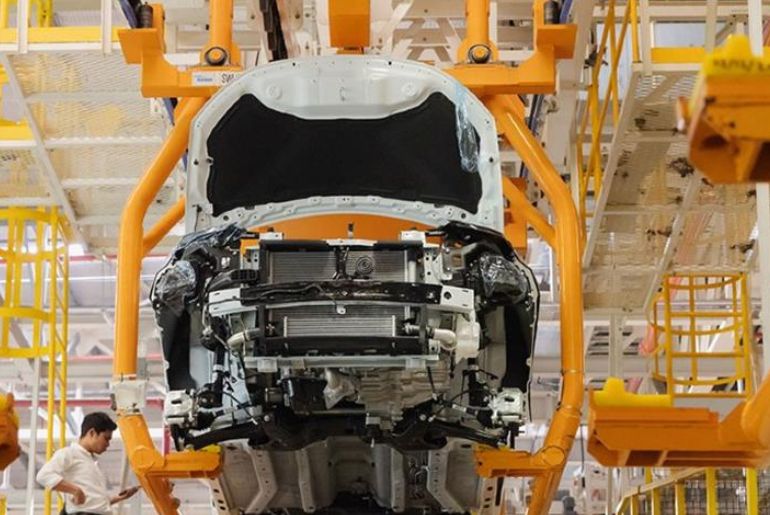By the end of FY24, Tata Motors, through its EV division Tata Passenger Electric Mobility (TPEM), will hold a commanding 73 percent of the Indian passenger electric vehicle market. The company plans to keep this position of dominance by mainstreaming EVs in the nation and growing its current lineup of five models.
With total sales of 73,833 units in FY24—a 48 percent year-over-year increase—TPEM saw EVs account for almost 13 percent of Tata Motors’ total sales of 582,915 passenger vehicles for the whole fiscal year.
The carmaker now plans to invest between Rs 16,000 and Rs 18,000 crore in its EV business by the end of the decade, to have EVs account for more than 30% of its total volumes by FY30.
Tata Motors stated in an investor presentation on June 11 that, if needed, it will make this massive investment in its EV sector between FY25 and FY30 in order to meet its future growth ambitions. The company also plans to reach an EBITDA breakeven in TPEM by FY26. Furthermore, the company intends to persist in its endeavour to mainstream electric vehicles (EVs) in India by means of various measures, such as the launch of novel models, broadening the reach of EV retail outlets, and cooperating to enhance the nation’s charging infrastructure.
While it currently offers the X-Pres-T EV for fleet operators; Tigor and Tiago EVs for mass-market buyers, and the Punch and Nexon EV for aspirational customers, the company aims to introduce 10 new EV models by FY30. The first ones on the anvil are the Tata Curvv mid-size EV, and the Harrier EV, slated to be introduced later in the ongoing financial year. Following the two models will be the Sierra EV and Avinya EV – both slated for introduction in FY26 – between April 2025 to March 2026.
TPEM will leverage its two ground-up EV platforms – Acti.ev and the JLR-derived EMA platform – to address the key barriers of extended range, and advanced technology in modern-day EVs. The company says it will leverage over 3 billion kilometres of driving data from its existing EV parc on the roads to produce efficient, updatable, and high-performance EVs in the coming years.
It will offer high-energy-density batteries with fast-charging capabilities to alleviate range anxiety, while the upcoming models will boast next-generation advanced displays with EV-specific UIs, and offer connected-car features as well. Lastly, the company will also focus on offering advanced driving modes for customer delight, as well as offer various features such as vehicle-to-load, and vehicle-to-vehicle EV charging.
TPEM is bullish about the passenger EV segment in India and expects the declining global battery prices, localisation, and the PLI schemes to augur well for the category over the next six years. Moreover, Tata Motors plans to expand its EV-exclusive retail channel – .ev – introduced in December last year, in over 50 key cities over the next two years.
The company has considered high Electric Vehicle TIV cities, high-penetration clusters, and high-growth-potential markets such as Ahmedabad, Pune, Bengaluru, Chennai, and several cities in Kerala, as some of the key locations with high EV potential. Furthermore, it has also identified outlet locations through micro-market analysis.
TPEM will also strengthen the charging infrastructure by intensifying collaboration to drive the installation and establishment of public as well as community Electric Vehicle chargers across India. While the company has established a mutually beneficial collaboration with charging ecosystem partners such as ChargeZone, Statiq, Glida, Hindustan Petroleum, Bharat Petroleum, and Shell, among others, it aims to grow the charging network from over 10,000 charging points by the end of 2024, to 100,000 points by FY30.
In terms of community charging points, TPEM aims to achieve a 23x growth from over 4300 charging points by FY24, to over 100,000 points by end-FY30. The company will also leverage synergies between EVs and rooftop solar (RTS) to further drive Electric Vehicle adoption, as well as accelerate its net-zero vision. The company estimates the contribution of renewable energy used for charging its electric vehicles to grow from the currently pegged 33 percent to nearly 70 percent by FY30.
The company also aims to drive synergies within the Tata Group companies – JLR (for EMA platform), Agratas (for battery security and cost benefits), Tata AutoComp Systems (for localisation of EV components), and Tata Power (for setting up home and public charging infrastructure) – to enable advanced, highly-localised and cost-efficient systems that empower the growth of electrification in the country.


